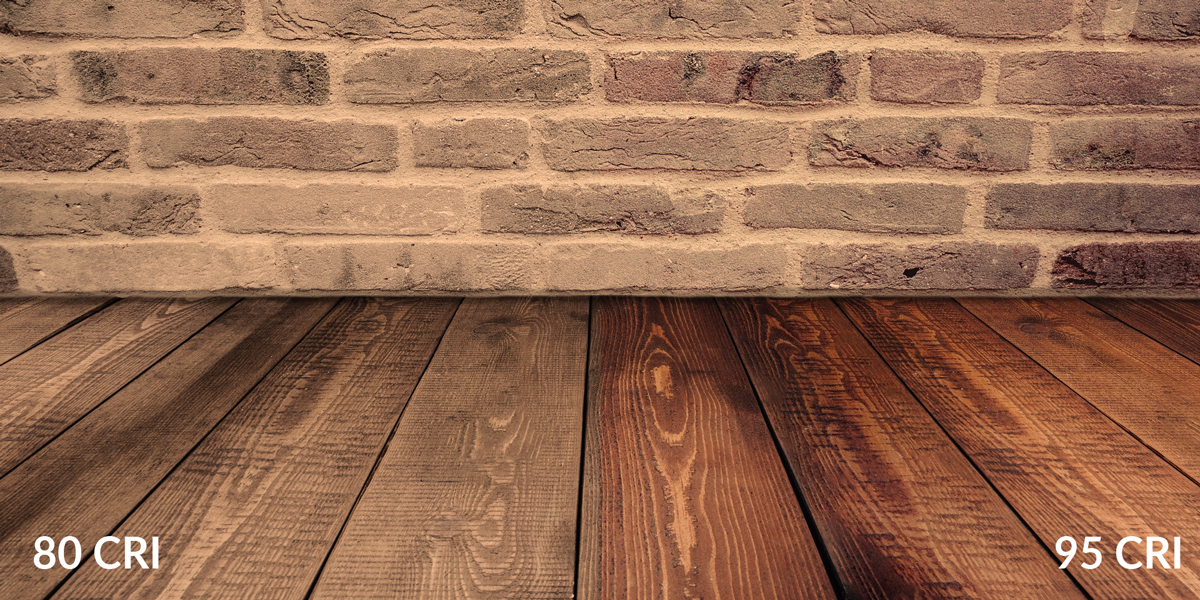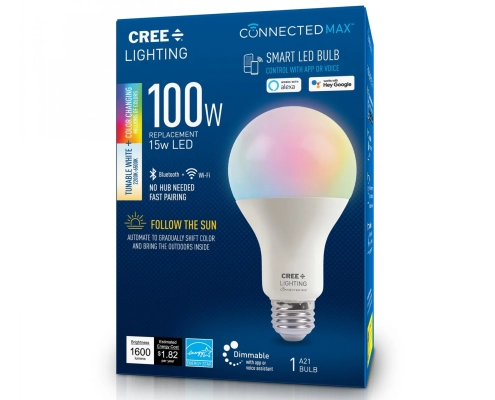Most of us are well aware of the energy and cost savings properties of LED lighting but then neglect to understand the various options available to them, i.e. lumen output and color rendition index. Oftentimes, well intentioned homeowners end up buying a bunch of LED bulbs, perhaps on sale, without really knowing what they are buying. Then they switch out all their old A-lamps for LED bulbs throughout the house just to find out that they look awful. Oftentimes, the reason being, is that they bought LED bulbs that are 5000 Kelvin color temperature which will give off a bright cool color better suited for hospital settings than private residences.
When it comes to figuring out which LED bulb or LED fixture to select for your home and particular application, it can get a bit overwhelming and/or confusing. But let’s tackle the basics so you can get a better understanding when purchasing your next LED lighting product:

Some manufactures will list detailed information such as Lumens, Watts, Color rendering index and temperatures in Kelvin. Others will be more generic. The other aspect is the life of an LED fixture or LED bulb. As a general rule, you get what you pay for. But let’s tackle each factor to enlighten you when standing in front of an array of shelves full of various LED bulbs or when shopping online.
Light Output and Brigthness vs. Wattage
Many people consider wattage when selecting a bulb, but the number of watts does not indicate how much light the bulb will emit. Look for a bulb’s lumen output instead of looking for watts to determine the bulb brightness. A lumen is a unit of measure that indicates the amount of light a bulb emits, whereas a watt is the amount of energy required to power a bulb. The higher the number of lumens, the more amount of light the bulb gives off.
Correlated Color Temperature (CCT) expressed in Kelvin (K)

Example showing LEDs in various temperature ranges from 2000K to 7000K (notice how Daylight starts at 5000K)
Color temperature is measured in Kelvin (K), and it indicates how warm or cool the light is. A low Kelvin number means the light is warmer and more yellow, while a high Kelvin number means the light is cooler and more blue. The color temperature range for LED bulbs is usually between 2700K and 6500K. You can also find the color temperature on the Lighting Facts label.
Choose warm or cool light according to your preference and purpose. Warm light (2700K to 3000K) is similar to incandescent bulb lighting, and it creates a cozy and relaxing atmosphere. It is well suitable for residential including kitchens, baths and areas where you want to unwind. We typically select 2700K for all residential interiors and 3000K for residential kitchens.
Cooler light (4000K to 6500K) is more like daylight, and it enhances clarity and alertness. It is typically better suited for commercial applications such as offices, retail, medical facilities, workshops, etc. 4000K is about the equivalent of natural light at midday.
Another consideration is the aging eye as the lens becomes less clear over time and can cause colors to appear more yellow. A cooler LED bulb like 3500K might help to counteract the yellow cast effect caused by aging eyes.
Color Rendering Index (CRI)
The CRI measures how accurately a light source displays colors. A relative high CRI (80 or above) means the colors look more natural and vibrant, while a low CRI (below 80) means the colors look dull and distorted. Not all LED bulbs have a CRI rating, but if they do, you can find it on the package or on the manufacturer’s website. For instance if you are lighting art, you would want to choose a lamp with a high CRI of a minimum of 92. The example below illustrates the effect CRI can have on finishes inside a home:

Image source: Waveformlighting
Current innovations and Smart Home Options
Some LED bulbs have a dynamic color option which allows you to pretty much pick any color of the rainbow for your bulb. These bulbs can be fun and creative but are not typically suitable for general lighting. You can use them for accent lights, such as table lamps, wall sconces, or outdoor fixtures, to create mood and ambiance. A newer generation of LED bulbs allows you to switch between the various Correlated Color Temperatures (CCT), tunable white color, control them via smart phones. add lighting controls, etc. i.e. as being offered by the CREE Lighting:









